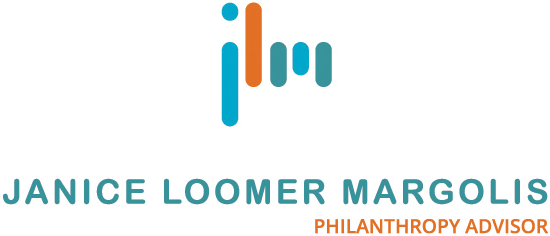When I grew up there was no such thing as sunscreen. In fact we used baby oil and suntan lotion to enhance those tanning rays. In the 1980’s and 1990’s the damage that sun did to one’s skin was prominently publicized. We were told to protect our and our children’s skin from the sun and from day one we slathered our children in sunscreen. They grew up knowing that going outside meant putting on sunscreen and it became a habit - just part of what they did.
So too, with recycling. In the 1990’s recycling blue boxes appeared in schools and children were trained to recycle. They brought these ideas back into their homes and recycling became routine.
These are just two examples of how by teaching the young, new ideas can become part of everyday normal practice. Building on the sunscreen and recycling approach, if we believe it is valuable to have a culture of philanthropy in our communities, it is wise to develop projects and activities to engage children in philanthropy – making it fun, meaningful and integral to what they do and how they live.
There are examples that support the notion that early engagement does work. A colleague who has devoted his life to philanthropy recalled how as a young boy in church with his father, the collection plate was passed around and his father gave him money to add to the plate. This act of contributing made a big impression on him and inspired him to continue to donate. When my son, Corey, was in elementary school, he started a dog show at his school to raise funds for the SPCA - and to showcase our dog, Chester. The kids enjoyed the dog show immensely and when Corey donated the funds to the SPCA, the charity did a first-rate job of thanking him for his efforts and showing him how the animals benefited from his hard work. To this day, Corey is a donor to the SPCA.
Today, there are also some excellent programs that schools and others are adopting to expose young people to the joys of philanthropy. At Vancouver Talmud Torah, grade seven students select a good deed that is personally meaningful and then research and select an agency that delivers on their interest. The students present to each other on what they have discovered and as a group choose how to allocate funds they have raised, culminating in a presentation of grants to the agencies they have selected as recipients.
I am seeing other programs where sports teams raise funds and then select organizations that they think need their support. And a local foundation is developing a nine month program consisting of on-line learning and seminars, featuring high profile philanthropists, for youth and young adults to develop into leaders in philanthropy. All these activities give young people a positive experience with philanthropy with the goal that they integrate this experience into their lives.
When I work with families, they often ask me how to engage their children in philanthropy. The book Philanthropy Heirs & Values has excellent suggestions on age-appropriate activities that range from talking to children about their interests, to visiting and participating in service activities with local or international organizations, to identifying and researching projects that meet their interests and monitoring and evaluating grants that they have recommended.
Just like with sunscreen and recycling, when we incorporate philanthropy into the lives of children, we are building habitual behaviour. In the case of philanthropy, we are developing a new generation of philanthropists who will support and inspire our communities into the future.
As a philanthropy advisor, I work with families and individuals to create and facilitate a safe and productive environment to articulate values, interests and goals. Together we develop and implement a plan to make giving meaningful, satisfying and effective.
For more information on how I work with clients to assist them to give with heart and for impact please visit the approach and services pages on my website.

